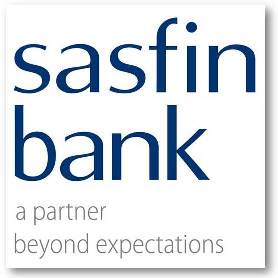
News

Sassoon ensuring Sasfin’s continued growth
ANT KATZ
New strategy aims to lure
more high-income clients
As a niche bank, Sasfin has felt the tough environment in the private banking sector. The new strategy aims at enhancing Sasfin’s competitive appeal.
The Sunday Times’ Business Times and stable-mate BUSINESS DAY reported this week that Sasfin CEO Ronald Sassoon confirmed that the bank is in the final stages of introducing a transactional banking offering to high-net-worth individuals who are traditionally serviced by the likes of Investec, FNB Private Wealth or RMB Private Bank.
It will offer clients a transactional account that they can manage through online banking, debit card and mobile banking.
The transactional offering is likely to serve as a defensive mechanism for Sasfin. Even though it could have a loss in its first year, the offering will shield it from its rivals, which have been trying to lure its clients.
“The other reason is that we are currently susceptible to other banks being able to see our interactions with our clients … we want to take that risk off their radar,” Sassoon told Business Times.
“We don’t want to become a Capitec”
He was referring to Sasfin Bank clients with transactional accounts at other banks who invest through Sasfin. The move into retail banking will be pitched only at the big earners.
 “We don’t want to become a Capitec,” said Sassoon. Sasfin, which attained its banking licence 15 years ago, aims to remain a specialist bank.
“We don’t want to become a Capitec,” said Sassoon. Sasfin, which attained its banking licence 15 years ago, aims to remain a specialist bank.
Sassoon can take comfort in the fact that although confidence in the retail sector is marginally firmer, the outlook is weak. The Ernst & Young’s (EY) banking survey found that retail bank confidence was moderately stronger in the first quarter this year, rising from 30 index points in last year’s fourth quarter to the current 38 index points. Investment banking confidence fell from 82 to 73, even though the sector benefited from stronger corporate sector prospects.
Back to pre-2008 levels
The second half of 2013 was the first reporting period where investment banking earnings achieved pre-global financial crisis levels,” according to pundit Emilio Pera.
Sassoon told Business Times that his competitors shouldn’t to be worried about his stealing their lunch, because his bank is tiny.
Even with its modest size, though, it has more than 25 products, including wealth and asset management, trade and debtor finance, capital markets and various commercial solutions.
It has also been considering doing business elsewhere in Africa.
So far, it has been doing suitcase banking, but Sassoon said Africa was very important to him and getting into the rest of Africa would be a “significant strategic move.”
Another route for the cash-flush bank is to find acquisitions. It had a go at acquiring Mercantile Bank in 2010, but the deal flopped.
Knack for generating recurring profits
Sassoon said that so far no possible targets had been found, but the bank was on the lookout.
Sasfin Bank arguably has a knack for generating recurring profits. Rating agency Moody’s, which recently affirmed its outlook for the banking unit of the group as stable, says it does not expect any short-term downward pressures in the bank’s financial metrics, despite the tough operating environment in South Africa.
The rating agency considers Sasfin Bank’s profitability levels “sustainable,” given its high-quality service positioning in its specialised businesses.
Moody’s: Customer deposits rose 50% y-on-y
But its earnings diversification remains weak because of the dominance of office-equipment finance loans in the overall business mix.
Moody’s is comfortable with the fact that Sasfin is growing its customer deposits, which had risen 50 percent year-on-year at the end of December.
The rating agency also believes that the bank’s long-standing and well-established franchise in South Africa’s securitisation market helps to mitigate refinancing risk.
The total assets of the bank’s parent company, Sasfin Holdings, grew 36 percent to R7.4-bn, largely as a result of a 21 percent growth in the business banking division, with loans and advances reaching R3.8-bn.
Total income jumped 15 percent on growth in loans and advances and expansion of the non-interest revenue base.
This is despite the fact that the Bureau for Economic Research revealed that investment banks’ confidence took a knock compared with retail banks’ in the first quarter of this year.
Although this is the case, the specialised second-tier bank refuses to enter the mass retail banking market.




